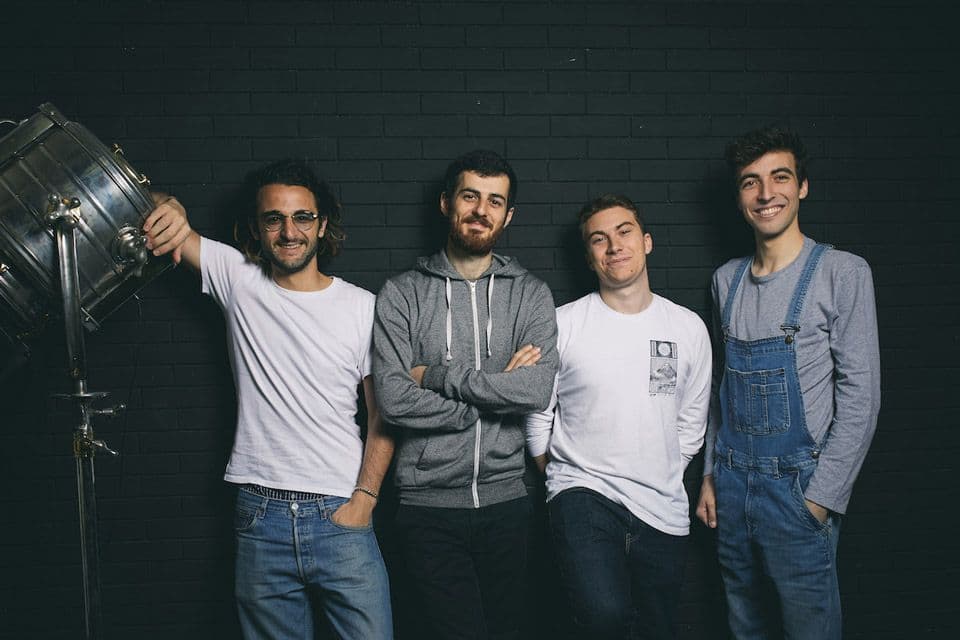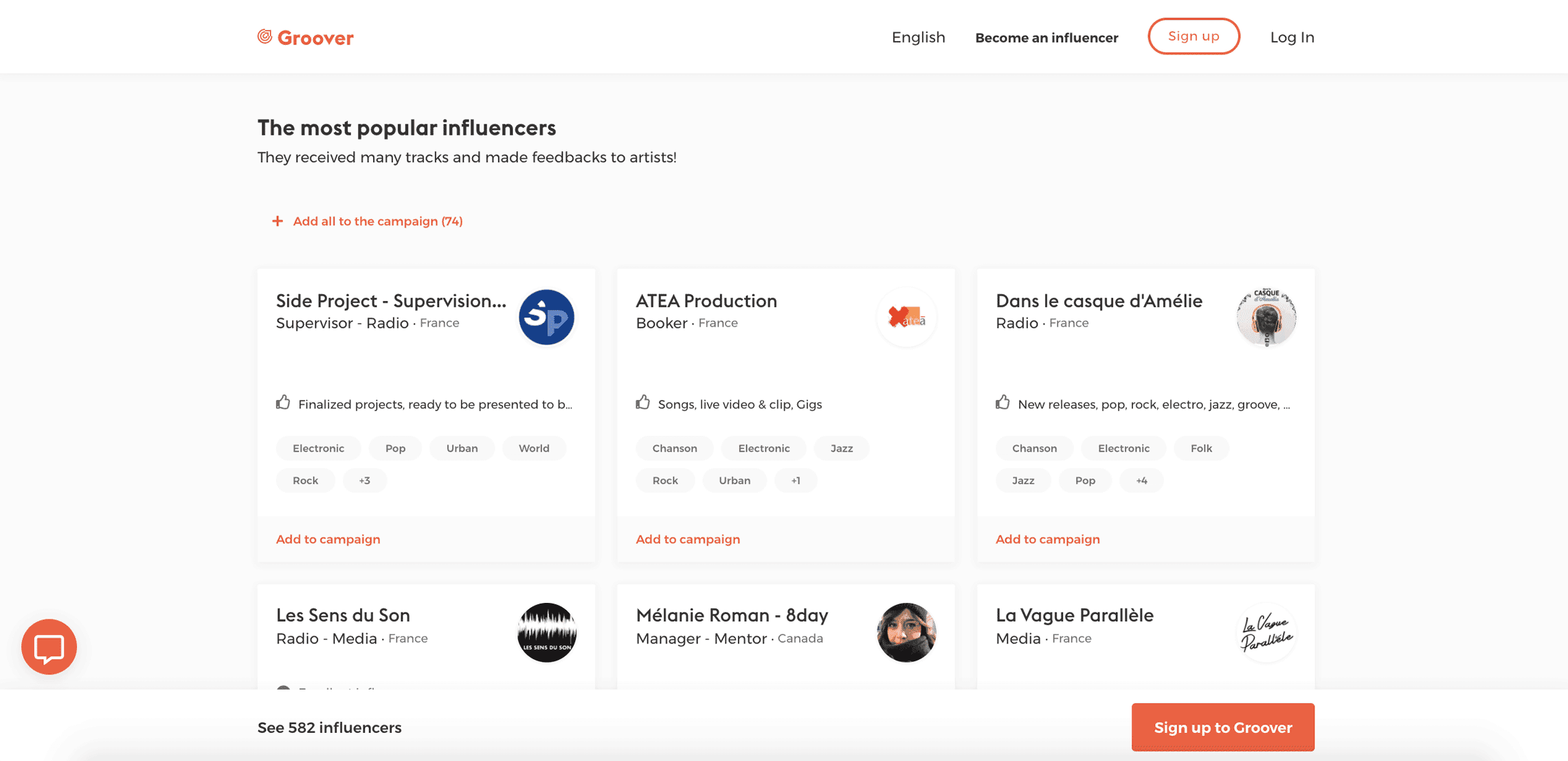Music Promotion Playlisting Tips With Groover Co Founder Dorian Perron
Music Promotion & Playlisting Tips With Groover Co-Founder Dorian Perron
Amuse, amuse

Our friends at Groover help artists who want to promote their music connect with the best media outlets, radio stations, record labels and music pros looking for emerging talents.
Artists can send their song to a list of editors, label reps and curators for €2 per contact. The listeners then have 7 days to provide written feedback to the artist and decide whether they will share the song or not, with a blog review, playlist add or radio broadcast.
We caught up with Groover co-founder Dorian Perron to get his advice for hooking up playlists and promo as an independent artist.
What do you think is the most complicated step in music promotion and how can artists get around it?
- I think the most complicated step is breaking down the first wall of having someone listen to your track and answering you. But once this happens, it’s really important that you nurture this relationship. That’s why Groover is relevant, because it guarantees that you break down that first wall. It doesn’t guarantee that they’re going to like your music, but if they do, you can continue to build on the relationship.
What’s the best way to reach out to music media as an independent artist managing your own PR strategy?
- It depends on where you are and what kind of music you’re doing. For example, if you’re doing rap or hip hop in the French bubble, these guys are not reading their emails. So most artists try to reach out to media and playlist curators on Instagram via DM. For almost all the other genres of music, the best way to reach out is by email. Start with a newsletter because it’s something that journalists and radio programmers are used to.
Then you can follow up with a personal email to those who have opened your email and/or clicked on your listening link. Also to your favorite media outlets of course. For blogs, don't hesitate to mention something nice, details about an article you have read on it for instance. Bloggers are just like artists, they really like it when their work is appreciated. It can help create a meaningful bond with them.
What should artists include in a newsletter?
- It needs to remain very simple. Include the name of your artist project, song, cover art, name and logo of the record label, with the link to listen to the track and one paragraph about the release. The biggest piece of feedback we get from media outlets is you don’t need to send a lot of info. If they need more info, they’ll ask you for it. Keep the design clean and use a cool typeform. If you have more you want to talk about, like tour dates, merch releases, promo milestones or a live session video, include that as secondary info in the newsletter.
I also recommend using an email software tool like Mailchimp or Sendinblue to send your newsletters. After you’ve sourced a heap of email addresses in your area of music, import these into your email software and send the newsletter. After you’ve sent it, look at who opened your email and who clicked the link and listened to your track. Once you know this, don’t be afraid to follow up with a more personalized email to the contact.

Is there anything a musician should consider to make their release more “PR-able”?
- The most important thing for artists to do is remain authentic to their own artistic universe. In these troubled times, it’s even more important to be authentic. I wouldn’t be surprised if in the years to come, we go back to artists that are very authentic and talking about their universe and the atmosphere around them. Rather than artists who try to make their projects “PR-able”.
Do you have any insider tips for getting a track playlisted on Spotify?
- On Spotify, artists need to start with user-generated playlists in order to create a snowball effect that will then lead their tracks to be added to algorithmic playlists and maybe editorial ones.
One easy way to find user-generated playlists that are relevant to your project is to go on your Spotify profile, click on the "Fans Also Like" section. Visit the profiles of these "similar" bands and go to their "About" section. In that section, you usually see the top 5 playlists that have featured their music, and if those artists are not "too big" already you'll find user-generated playlists among them — meaning playlists that are not created directly by the Spotify editorial team or algorithms.
Those playlists are usually highly engaging. Try to search for their name on Facebook and Instagram, and reach out to them as you'd do with a blog. We have quite a few cool user-generated playlists that you can contact directly on Groover as well, don't hesitate to have a look!
How should independent artists approach their own promotional platforms?
- You need to think about your universe and what you embody as an artist. Today Instagram is very important. If you’re talking about very personal things in your songs, it’s important that you think about having photos that reflect this story online. If your goal is to have listeners connect with your music and your personal feelings, it’s important that they connect to you also on an image level. On Groover, the releases that have performed the best are the ones that have a universe developed around them. It adds to how original and unique you are.
Being a great artist is all about building great relationships with people — what’s your advice for nurturing relationships once you’ve received feedback?
- It’s less about building relationships with the media outlets, and more about developing relationships with the people behind them. A lot of media outlets and writers who are managing blogs are people who are not being paid for it. Usually, they started their own project because they’re passionate about music.
If you have connected with someone who has liked your music, you should feel free to connect with them personally. Send them updates, maybe add them on Instagram and Facebook, and talk with them there. If someone has really loved your music, they would love to hear from you. When you release a new track, send it to them first, and let them know they’re first to hear it. Once you have hooked someone’s attention, you should feel free to continue to nurture it.
What about radio pitching — this can be a little more challenging than playlist pitching. Do you have any advice for independent artists tackling this on their own?
- Don’t think you’re going to get broadcasted on big national FM radio if it’s your first track or EP. Focus on local and regional radio stations in your area first. They’re very music passionate and love to discover and feature new local talent.
Radio is still very relevant today. People are very used to discovering on radio, either in their car or in a store. They listen, they Shazam it, and then they search for it on the streaming platforms. So it’s still really relevant to get on radio.
In some countries you have access to digital tools that help you pitch your tracks to radio programmers. They’re good too. In France, we have community radio stations that are attached to universities. They’re usually curated by one or two people, and the best way to connect with them is by email or sending them some CDs (if you have some).
Focus on getting your track on as many local community stations as possible, and build it up from there. Once you can show traction on local radio, the national FM stations will start to pay attention.
Any last piece of advice to young developing artists? Is there one thing they should focus on when building their artist project?
- When you release a track, don’t think that’s sufficient. You need to build your artistic project around it. You need to build an image, a message and a purpose. Especially today with social media, people are eager to connect with your universe. Even if it’s not you they’re interested in, it could be your artistic universe that they feel connected to.
Try to anchor your music in something that people will remember. The goal today is to have someone listen to your song and think, “I’m going to follow this artist and listen to everything they do.” Build a community of superfans around you and continue to develop your artistic universe that connects with them on a deep level.
Want to Groover out for yourself? Amuse users can now enjoy a 15% discount. Sign up on Groover and use the code AMUSEGROOVER!